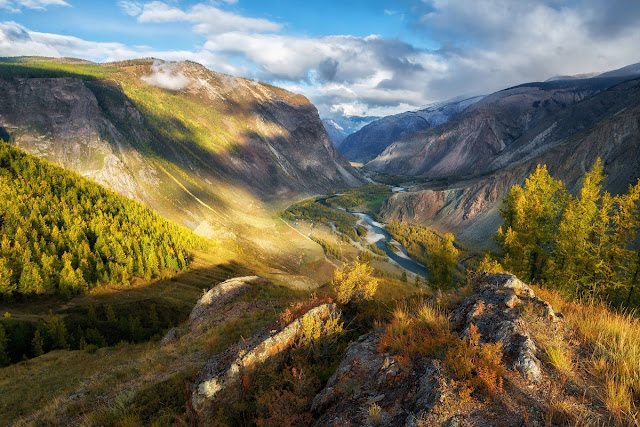The current government of Russia has brought destruction, horror and genocide to its neighbor Ukraine in an unprovoked war which has lasted for more than three months and shows no sign of ending. But this profile is not concerned with the despotic government of the present day. It’s concerned with Russia the natural entity and the society, both of which are far larger and more durable than any government, however terrible. And Russia is a grand country.
Map of Russia with its administratrive divisions.
Russia is the world’s largest country in area, covering 17,125,191 sq km/6,612,073 sq mi, 1/8 of the world’s land mass (nearly twice as big as the United States). It spans two continents (Europe and Asia—and as noted before, Russia’s eastern tip sits on the North American plate) and eleven time zones. Roughly 2/3 of Russia is in Asia and is known as Siberia. Its capital is Moscow and its population is slightly over 143 million.
Traces of human habitation, Homo erectus, date back 2 million years to the Paleolithic in the Altai Mountains, and traces of the last known Neanderthals from 45,000 years ago have been found in western Siberia. In historical times, Russia was settled from both north and south, with Greeks settling the coasts of the Black Sea and Kievan Rus moving northeastward, and Varangians—Vikings—coming down the rivers from the north. The Grand Duchy of Moscow emerged in the 1300’s as a regional power, and gradually gained influence through a series of wars with enemies to both east and west. In the 1700’s, after nearly a century of extreme turbulence, the tsarist state was established, which held until the early 20th century. Since the revolution of 1917 Russia has had a mostly authoritarian government, primarily under the guise of communism, up to the present day.
Russia is a petrostate, with an authoritarian government which controls (through indebted proxies—the “oligarchs” as generally known) the means of production of oil and gas, and has used that freely as a geopolitical tool. It currently ranks third globally in oil production, behind the United States and Saudi Arabia. Oil and gas exports have accounted for 60% of Russia’s total exports and 45% of its governmental revenue. Despite this heavy dependence on petroleum, Russia, having the world’s 11th-largest economy (prior to 2022 sanctions) has a large service sector which accounts for 62% of its GDP, nearly double that of industry (32%) which includes oil production.
St. Petersburg.
For having the world’s fourth-largest coastline, Russia is virtually landlocked, since much of that coastline is in the Arctic and iced over for much of the year, or else is geographically remote from any population. Its territory extends from 41º to 82º N latitude. Its climates range from temperate to fully Arctic and include the high arid plains of the east, the giant taiga (pine forest) of the north and alpine climates of the south and east. Russia is home to the world’s deepest lake—Baikal, at 1,642 m/5,387 ft (the second deepest is Lake Tanganyika in Africa, at 1,470 m/4822 ft). Its tallest mountain is Mount Ebrus in the western Caucasus, at 5,642 m/18,510 ft.
The Altai Mountains of southern Russia.
Tomorrow: introduction to Siberia.
Be brave, and be well.










No comments:
Post a Comment